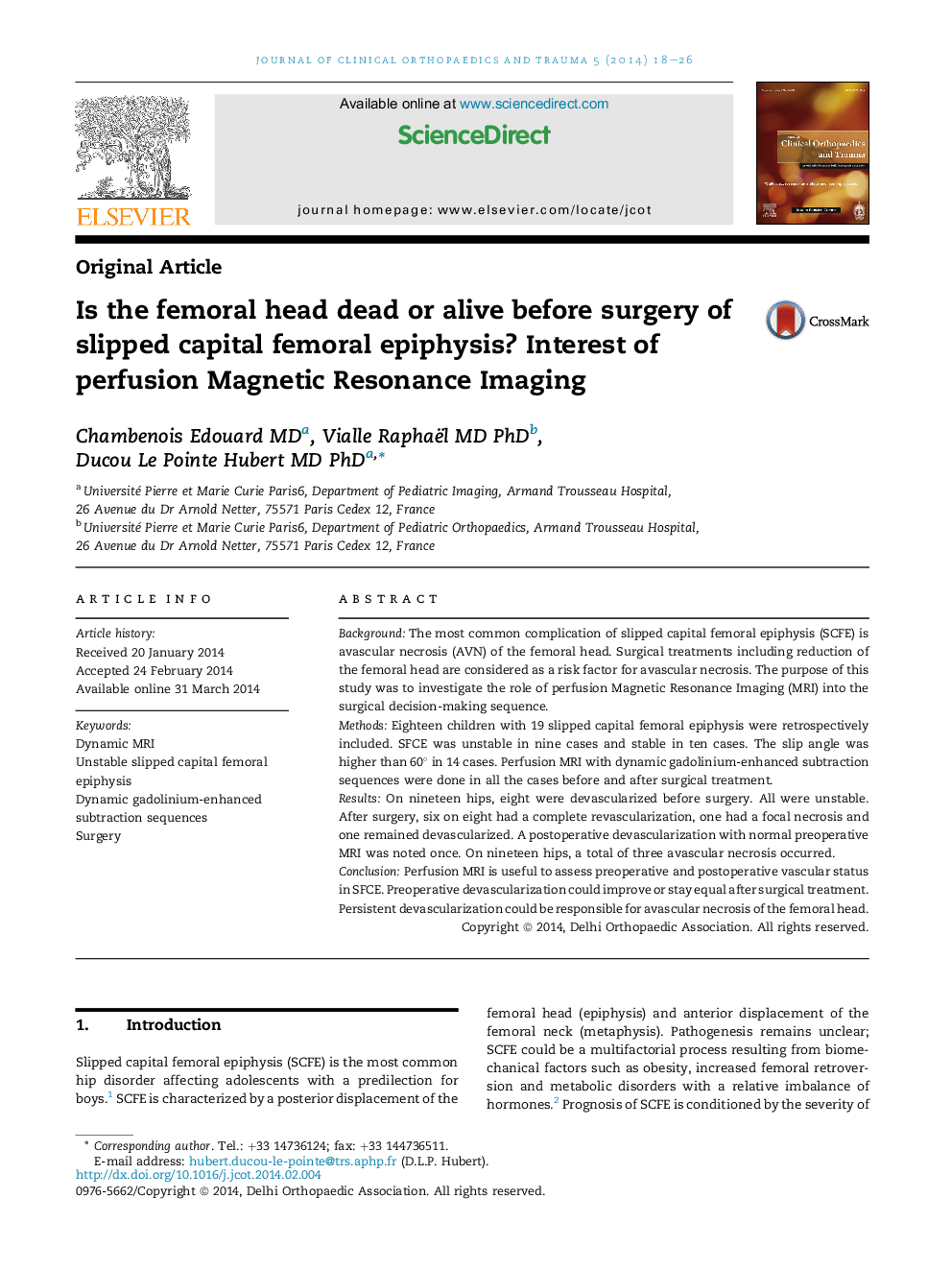| کد مقاله | کد نشریه | سال انتشار | مقاله انگلیسی | نسخه تمام متن |
|---|---|---|---|---|
| 3245367 | 1206713 | 2014 | 9 صفحه PDF | دانلود رایگان |
BackgroundThe most common complication of slipped capital femoral epiphysis (SCFE) is avascular necrosis (AVN) of the femoral head. Surgical treatments including reduction of the femoral head are considered as a risk factor for avascular necrosis. The purpose of this study was to investigate the role of perfusion Magnetic Resonance Imaging (MRI) into the surgical decision-making sequence.MethodsEighteen children with 19 slipped capital femoral epiphysis were retrospectively included. SFCE was unstable in nine cases and stable in ten cases. The slip angle was higher than 60° in 14 cases. Perfusion MRI with dynamic gadolinium-enhanced subtraction sequences were done in all the cases before and after surgical treatment.ResultsOn nineteen hips, eight were devascularized before surgery. All were unstable. After surgery, six on eight had a complete revascularization, one had a focal necrosis and one remained devascularized. A postoperative devascularization with normal preoperative MRI was noted once. On nineteen hips, a total of three avascular necrosis occurred.ConclusionPerfusion MRI is useful to assess preoperative and postoperative vascular status in SFCE. Preoperative devascularization could improve or stay equal after surgical treatment. Persistent devascularization could be responsible for avascular necrosis of the femoral head.
Journal: Journal of Clinical Orthopaedics and Trauma - Volume 5, Issue 1, March 2014, Pages 18–26
